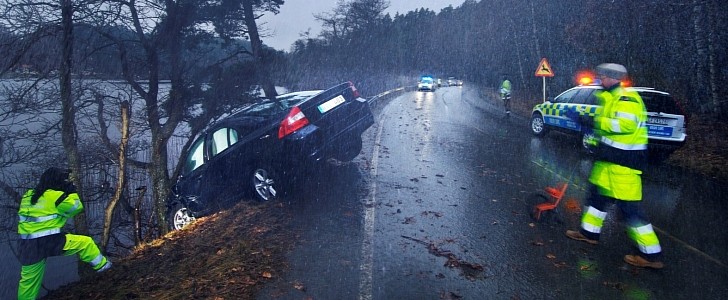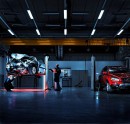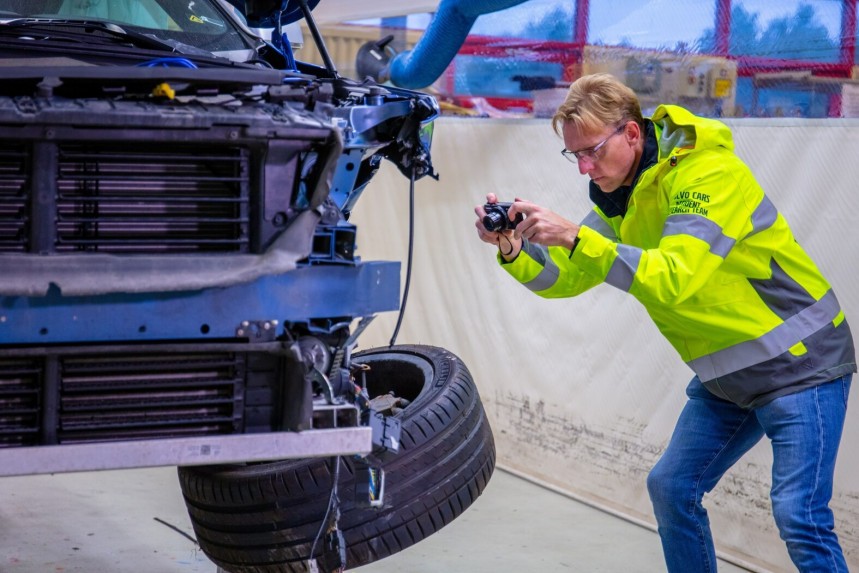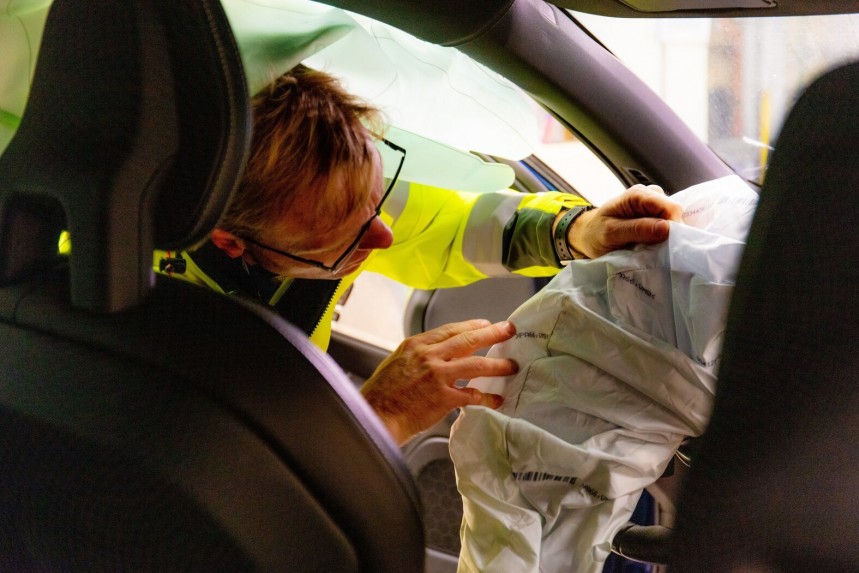Millions of car crashes take place every year, and people think that only some road conditions are dangerous. Before we get to the statistics and figures, think about the traffic conditions that you find to be the riskiest. If you are like most people, you probably imagined a tight corner on a banked road in the winter, or something of that nature.
Well, according to statistics made by the National Highway Traffic Safety Administration, the most common type of passenger vehicle collision is frontal impact. Out of over six million vehicle accidents reported in the U.S. in 2019, over 2.8 million were frontal impact ones, followed by 1.57 million rear impact collisions.
In other words, statistics show that the most common accidents took place when the involved vehicles were going straight. Most vehicle accidents are classified that way even if two vehicles "meet" at an intersection and one of them is struck in the side by the other. Since both were going straight, but in different directions, the crash remains reported as a frontal impact.
And yes, if you were thinking about accidents in corners, those are the second most common. In the case of fatal impacts, though, 7,758 crashes that took place while negotiating a corner proved fatal, while 27,164 fatal crashes took place while the vehicle was driving straight.
Another common fear for many drivers is turning left, which was what was happening right before 3,154 fatal accidents occurred in 2019 in the U.S. Merging or changing lanes was less dangerous, but still resulted in 785 fatal crashes, while being stopped in a traffic lane took 595 lives on American roads in 2019.
Over 500,000 crashes reported in 2019 involved a vehicle hitting a fixed object, such as an electrical pole, a tree, or any other object that is not moved from the side of the road.
From defensive driving courses, we know that the type of impact that involves a fixed object on the side of the road is usually caused by point fixation, and it can be prevented or mitigated by training to look where you want to go, and not at the obstacles that you face on the road. It sounds simple, but your initial instinct goes the other way and focuses on the danger instead of the way out.
Statistics have also shown that there were over 450,000 vehicle impacts with what is described as a non-fixed object. Think about whatever could fly from the roof of a car or from a truck or an open truck bed.
If an unsecured bicycle falls from a vehicle and it hits another vehicle travelling behind it, that is classified as an impact with a non-fixed object. It does not work the same way if someone is riding that bicycle, which is a vehicle-to-vehicle impact.
So, always remember to secure whatever you are loading on your vehicle, or in the bed of your truck and be sure to check the trunk to be properly closed. While you may appear to waste a minute of your time to double check that everything is secured, it can be the difference between a safe trip and an accident waiting to happen.
Statistics have shown that a left-side impact is more common than a right-side impact, but the difference in 2019 was as follows: 608,000 left-side collisions versus 555,000 right-side collisions. In either scenario, your best bet is to wear your seatbelt from the moment you get in a vehicle to the moment that you are about to get out of it.
Remember that a vehicle that is parked on the side of the road can still be struck by another vehicle. And another important fact is that physics works the same way for both the front seat passengers and those on the rear seats, and the vehicle's speed is the same for both groups. In other words, people riding in the backseat should also buckle up as soon as they get in a vehicle, regardless of how short the trip will be or how slow they think the car will be going.
Out of the over six million vehicle accidents reported in 2019, two million resulted in occupant or pedestrian injury. That is one in three accidents, if you want a different take on the figures. Statistics have also shown that slower speeds bring less fatal accidents.
Curiously, there are more fatal accidents that took place with vehicles travelling at speeds between 50 to 60 mph (80-96 km/h) than there are with vehicles traveling over 60 mph (96 km/h), but the difference is small (12,681 versus 11,814 crashes).
It is believed that the higher number of fatal crashes that took place between 55 and 60 mph (88-96 km/h) is linked to the number of vehicles on the road at the time, more hazardous driving conditions, both, and other factors that could not be determined.
We should point out that sticking to the speed limit or just under it makes many drivers be less aware of their surroundings, thus reducing their overall level of attention. The latter is a cognitive bias that brings the illusion of safety as you drive while sticking to the speed limit. That is incorrect, as you still need to pay attention to the road, your surroundings, and the reactions of the vehicle you are operating.
In contrast, out of all fatal crashes that took place in the U.S. in 2019, just 4,800 of them involved vehicles driving 30 mph (48 km/h) or slower. Mind you, pedestrian impacts also fit in this category. Speaking of speed, IIHS researchers discovered that a frontal crash at 40 mph (64 km/h) caused minimal protrusion into the driver's space.
An apparently harmless extra 10 mph (16 km/h), which would raise the speed of the impact to 50 mph (80 km/h), brings noticeable deformation on the driver footwell, side door, and dashboard. The crash test "dummies" used in the test had signs of sever neck and lower leg injuries. Concerning injury severity and speed, things take a turn for the worse once the latter goes up. At a certain point, it all comes down to the forces absorbed by the body in the impact. By the way, strict speed limit enforcement is also bad.
Dr. David Harkey, the President of the Insurance Institute for Highway Safety, explained that higher speeds cancel out the benefits of vehicle safety improvements such as airbags and improved structural designs. With a rise in speed comes a smaller change for a driver to react to unforeseen events on the road ahead, which means that many do not even have a chance to brake before the impact.
In other words, statistics show that the most common accidents took place when the involved vehicles were going straight. Most vehicle accidents are classified that way even if two vehicles "meet" at an intersection and one of them is struck in the side by the other. Since both were going straight, but in different directions, the crash remains reported as a frontal impact.
And yes, if you were thinking about accidents in corners, those are the second most common. In the case of fatal impacts, though, 7,758 crashes that took place while negotiating a corner proved fatal, while 27,164 fatal crashes took place while the vehicle was driving straight.
Another common fear for many drivers is turning left, which was what was happening right before 3,154 fatal accidents occurred in 2019 in the U.S. Merging or changing lanes was less dangerous, but still resulted in 785 fatal crashes, while being stopped in a traffic lane took 595 lives on American roads in 2019.
Over 500,000 crashes reported in 2019 involved a vehicle hitting a fixed object, such as an electrical pole, a tree, or any other object that is not moved from the side of the road.
From defensive driving courses, we know that the type of impact that involves a fixed object on the side of the road is usually caused by point fixation, and it can be prevented or mitigated by training to look where you want to go, and not at the obstacles that you face on the road. It sounds simple, but your initial instinct goes the other way and focuses on the danger instead of the way out.
If an unsecured bicycle falls from a vehicle and it hits another vehicle travelling behind it, that is classified as an impact with a non-fixed object. It does not work the same way if someone is riding that bicycle, which is a vehicle-to-vehicle impact.
So, always remember to secure whatever you are loading on your vehicle, or in the bed of your truck and be sure to check the trunk to be properly closed. While you may appear to waste a minute of your time to double check that everything is secured, it can be the difference between a safe trip and an accident waiting to happen.
Statistics have shown that a left-side impact is more common than a right-side impact, but the difference in 2019 was as follows: 608,000 left-side collisions versus 555,000 right-side collisions. In either scenario, your best bet is to wear your seatbelt from the moment you get in a vehicle to the moment that you are about to get out of it.
Remember that a vehicle that is parked on the side of the road can still be struck by another vehicle. And another important fact is that physics works the same way for both the front seat passengers and those on the rear seats, and the vehicle's speed is the same for both groups. In other words, people riding in the backseat should also buckle up as soon as they get in a vehicle, regardless of how short the trip will be or how slow they think the car will be going.
Out of the over six million vehicle accidents reported in 2019, two million resulted in occupant or pedestrian injury. That is one in three accidents, if you want a different take on the figures. Statistics have also shown that slower speeds bring less fatal accidents.
Curiously, there are more fatal accidents that took place with vehicles travelling at speeds between 50 to 60 mph (80-96 km/h) than there are with vehicles traveling over 60 mph (96 km/h), but the difference is small (12,681 versus 11,814 crashes).
It is believed that the higher number of fatal crashes that took place between 55 and 60 mph (88-96 km/h) is linked to the number of vehicles on the road at the time, more hazardous driving conditions, both, and other factors that could not be determined.
In contrast, out of all fatal crashes that took place in the U.S. in 2019, just 4,800 of them involved vehicles driving 30 mph (48 km/h) or slower. Mind you, pedestrian impacts also fit in this category. Speaking of speed, IIHS researchers discovered that a frontal crash at 40 mph (64 km/h) caused minimal protrusion into the driver's space.
An apparently harmless extra 10 mph (16 km/h), which would raise the speed of the impact to 50 mph (80 km/h), brings noticeable deformation on the driver footwell, side door, and dashboard. The crash test "dummies" used in the test had signs of sever neck and lower leg injuries. Concerning injury severity and speed, things take a turn for the worse once the latter goes up. At a certain point, it all comes down to the forces absorbed by the body in the impact. By the way, strict speed limit enforcement is also bad.
Dr. David Harkey, the President of the Insurance Institute for Highway Safety, explained that higher speeds cancel out the benefits of vehicle safety improvements such as airbags and improved structural designs. With a rise in speed comes a smaller change for a driver to react to unforeseen events on the road ahead, which means that many do not even have a chance to brake before the impact.








